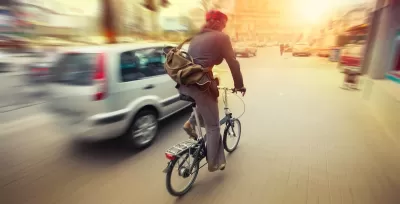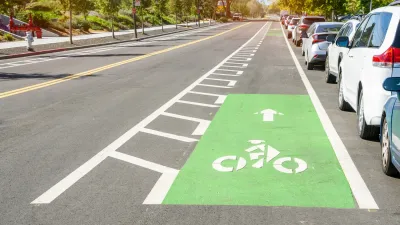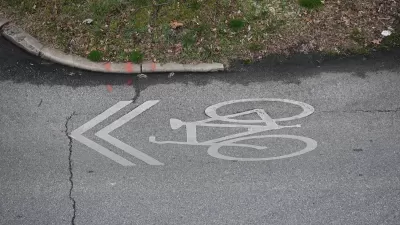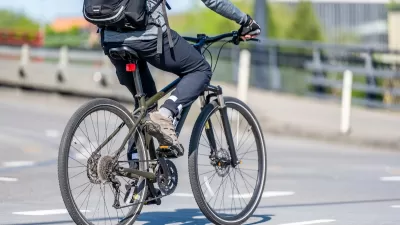A new camera technology can detect when vehicles pass too close to people on bikes.

A handlebar-mounted camera technology developed at the University of Arizona and Arizona State University could help keep cyclists safer on the road by collecting data about close-passing drivers, reports Kea Wilson for Streetsblog USA.
The camera is paired with a sensor that detects when a vehicle passes dangerously close to a cyclist and collects information that can be used for legal evidence and, collectively, inform planners and policymakers about close-passing “hot spots” and where safe bike infrastructure is lacking.
According to Wilson, “One Australian study estimates that up to 38 percent of motor vehicle drivers who hit cyclists were either overtaking or close-passing the vulnerable road user. But similar stats are hard to come by in most U.S. jurisdictions.” Now, advocates hope that technology like CycleSafe, as the sensor is dubbed, will help change that.
Robert Heinrichs, associate professor at Arizona State's School of Computing and Augmented Intelligence, says “it's not impossible that the CycleSafe software could someday be programmed to automatically notify EMS when a serious crash is detected, potentially saving lives in hit-and-runs; it could also generate video footage for educational campaigns aimed at showing drivers just how terrifying a close pass really is for a person in the saddle.”
FULL STORY: New Camera Tech Hopes to Stop Drivers From Close-Passing Cyclists

Maui's Vacation Rental Debate Turns Ugly
Verbal attacks, misinformation campaigns and fistfights plague a high-stakes debate to convert thousands of vacation rentals into long-term housing.

Planetizen Federal Action Tracker
A weekly monitor of how Trump’s orders and actions are impacting planners and planning in America.

San Francisco Suspends Traffic Calming Amidst Record Deaths
Citing “a challenging fiscal landscape,” the city will cease the program on the heels of 42 traffic deaths, including 24 pedestrians.

Defunct Pittsburgh Power Plant to Become Residential Tower
A decommissioned steam heat plant will be redeveloped into almost 100 affordable housing units.

Trump Prompts Restructuring of Transportation Research Board in “Unprecedented Overreach”
The TRB has eliminated more than half of its committees including those focused on climate, equity, and cities.

Amtrak Rolls Out New Orleans to Alabama “Mardi Gras” Train
The new service will operate morning and evening departures between Mobile and New Orleans.
Urban Design for Planners 1: Software Tools
This six-course series explores essential urban design concepts using open source software and equips planners with the tools they need to participate fully in the urban design process.
Planning for Universal Design
Learn the tools for implementing Universal Design in planning regulations.
Heyer Gruel & Associates PA
JM Goldson LLC
Custer County Colorado
City of Camden Redevelopment Agency
City of Astoria
Transportation Research & Education Center (TREC) at Portland State University
Jefferson Parish Government
Camden Redevelopment Agency
City of Claremont





























